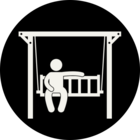I have a Point Between Two Line , I need to Convert those point into Line of certain lenght
- Home
- Forums
- FME Form
- Transformers
- Convert Point into Line between two line
Convert Point into Line between two line
- September 1, 2017
- 15 replies
- 17 views
15 replies
- Enthusiast
- 291 replies
- September 1, 2017
Maybe you can try the PointConnector.
- Contributor
- 7538 replies
- September 1, 2017
- Contributor
- 125 replies
- September 1, 2017
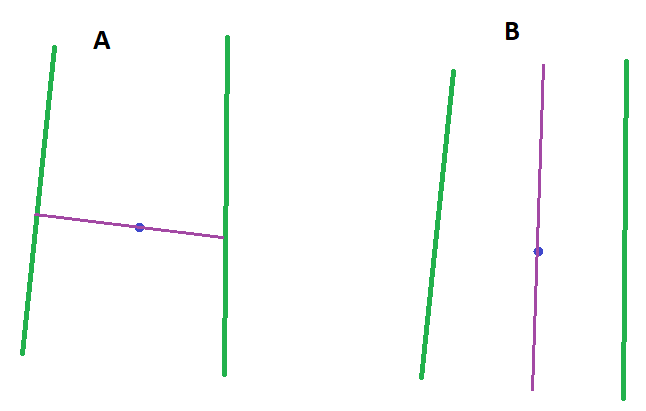
- Enthusiast
- 291 replies
- September 1, 2017

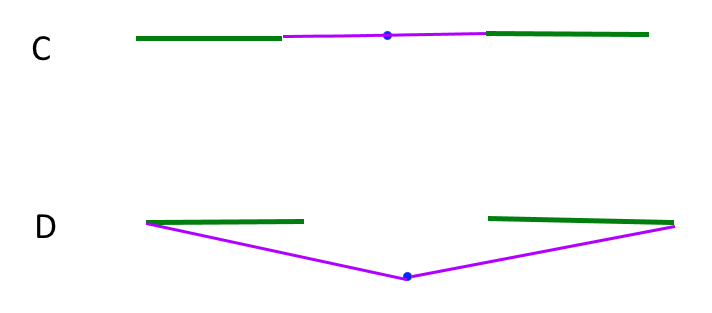
- Author
- 18 replies
- September 1, 2017
Maybe you can try the PointConnector.
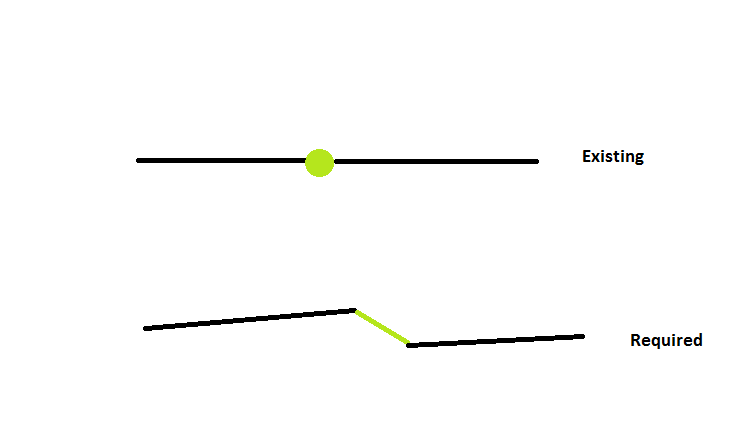 Want to Convert Green Point into Line
Want to Convert Green Point into Line
- Contributor
- 125 replies
- September 1, 2017
I have created an example workspace for you. In the workspace, ignore the creators - I am just using them to create the 2 original lines and a point in the middle. I have created an numeric user parameter for the length.
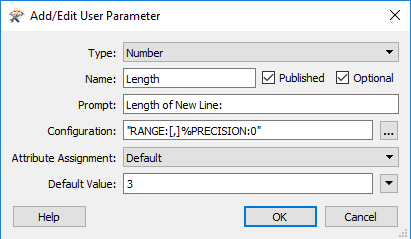
Then used an AttributeCreator to calculate the offset using the Pythagorean Theorem. Then offset the point in 2 directions, and used the LineBuilder to connect the points.
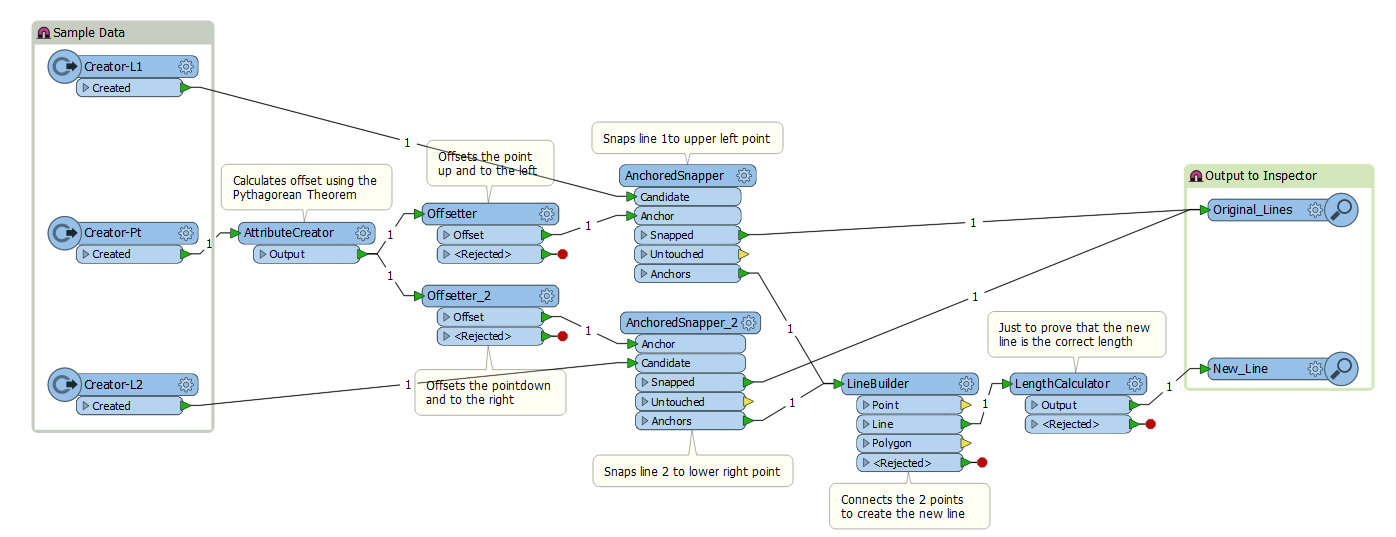
Here is the result!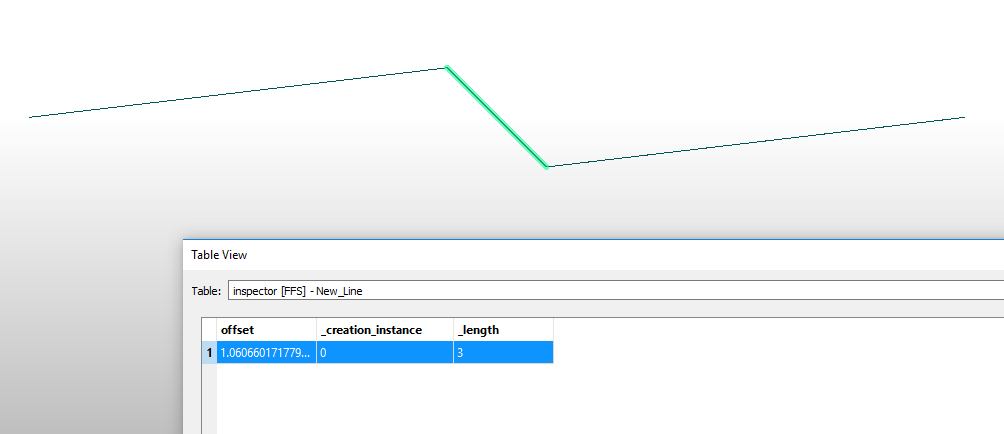
NOTE: This will only work for horizontal lines. You will need to modify it to work for lines with a different orientation.
See attached for the workspace.
-Courtney
- Author
- 18 replies
- September 2, 2017
I have created an example workspace for you. In the workspace, ignore the creators - I am just using them to create the 2 original lines and a point in the middle. I have created an numeric user parameter for the length.

Then used an AttributeCreator to calculate the offset using the Pythagorean Theorem. Then offset the point in 2 directions, and used the LineBuilder to connect the points.

Here is the result!
NOTE: This will only work for horizontal lines. You will need to modify it to work for lines with a different orientation.
See attached for the workspace.
-Courtney
Thanks @ courtney_m
Your File is working fine , but when i tried with my shape file ,result is nor Coming .Will you please check it wih my shape File is attached
- Contributor
- 7538 replies
- September 2, 2017
Your image is not enough to illustrate the conditions and requirements, so I try presuming.
- A switch-point touches end nodes of just two bus-bar line.
- Original two bus-bar lines related to the same switch-point are on the same straight line.
- Length of bus-bar lines should not be changed though the processing.
- End nodes of bus-bar lines opposite to switch-point should not be moved through the processing.
In this image, for example, L1 and L2 (gray lines) are the original bus-bar lines, and L1' and L2' (blue lines) are the lines after inserting a switch-line (red line) that has a certain length.

Here, L1 and L2 are on the same straight line, and the lengths of L1' and L2' are the same as L1 and L2 for each.
Have I presumed your requirement exactly?
- Author
- 18 replies
- September 2, 2017
Your image is not enough to illustrate the conditions and requirements, so I try presuming.
- A switch-point touches end nodes of just two bus-bar line.
- Original two bus-bar lines related to the same switch-point are on the same straight line.
- Length of bus-bar lines should not be changed though the processing.
- End nodes of bus-bar lines opposite to switch-point should not be moved through the processing.
In this image, for example, L1 and L2 (gray lines) are the original bus-bar lines, and L1' and L2' (blue lines) are the lines after inserting a switch-line (red line) that has a certain length.

Here, L1 and L2 are on the same straight line, and the lengths of L1' and L2' are the same as L1 and L2 for each.
Have I presumed your requirement exactly?
- Author
- 18 replies
- September 4, 2017
Your image is not enough to illustrate the conditions and requirements, so I try presuming.
- A switch-point touches end nodes of just two bus-bar line.
- Original two bus-bar lines related to the same switch-point are on the same straight line.
- Length of bus-bar lines should not be changed though the processing.
- End nodes of bus-bar lines opposite to switch-point should not be moved through the processing.
In this image, for example, L1 and L2 (gray lines) are the original bus-bar lines, and L1' and L2' (blue lines) are the lines after inserting a switch-line (red line) that has a certain length.

Here, L1 and L2 are on the same straight line, and the lengths of L1' and L2' are the same as L1 and L2 for each.
Have I presumed your requirement exactly?
Thanks @takashi workbench is working fine ,but in some case it not working please see in image. sample shape file attached .

- Contributor
- 7538 replies
- September 4, 2017
Your image is not enough to illustrate the conditions and requirements, so I try presuming.
- A switch-point touches end nodes of just two bus-bar line.
- Original two bus-bar lines related to the same switch-point are on the same straight line.
- Length of bus-bar lines should not be changed though the processing.
- End nodes of bus-bar lines opposite to switch-point should not be moved through the processing.
In this image, for example, L1 and L2 (gray lines) are the original bus-bar lines, and L1' and L2' (blue lines) are the lines after inserting a switch-line (red line) that has a certain length.

Here, L1 and L2 are on the same straight line, and the lengths of L1' and L2' are the same as L1 and L2 for each.
Have I presumed your requirement exactly?
If a switch-point that matches just one bus-bar should also be transformed into a line, clarify what kind of shape is finally required.
- Author
- 18 replies
- September 4, 2017
Your image is not enough to illustrate the conditions and requirements, so I try presuming.
- A switch-point touches end nodes of just two bus-bar line.
- Original two bus-bar lines related to the same switch-point are on the same straight line.
- Length of bus-bar lines should not be changed though the processing.
- End nodes of bus-bar lines opposite to switch-point should not be moved through the processing.
In this image, for example, L1 and L2 (gray lines) are the original bus-bar lines, and L1' and L2' (blue lines) are the lines after inserting a switch-line (red line) that has a certain length.

Here, L1 and L2 are on the same straight line, and the lengths of L1' and L2' are the same as L1 and L2 for each.
Have I presumed your requirement exactly?
2) Switch between Two HTCABLE
3) Switch between one busbar and One HTCALBLE
4) Switch connected one side busbar or HTCABLE
- Contributor
- 7538 replies
- September 4, 2017
Your image is not enough to illustrate the conditions and requirements, so I try presuming.
- A switch-point touches end nodes of just two bus-bar line.
- Original two bus-bar lines related to the same switch-point are on the same straight line.
- Length of bus-bar lines should not be changed though the processing.
- End nodes of bus-bar lines opposite to switch-point should not be moved through the processing.
In this image, for example, L1 and L2 (gray lines) are the original bus-bar lines, and L1' and L2' (blue lines) are the lines after inserting a switch-line (red line) that has a certain length.

Here, L1 and L2 are on the same straight line, and the lengths of L1' and L2' are the same as L1 and L2 for each.
Have I presumed your requirement exactly?
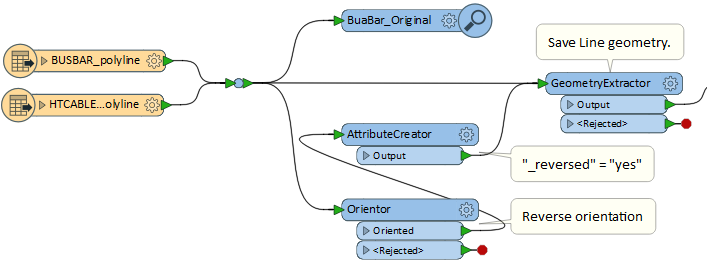
However, 4) is a completely different condition from others, and you didn't mention any requirement on this condition before. In the case 4), should the switch-point transform into what shape? If you need to create a line segment from the point, should connect between from where to where? Can find no answer unless you specify the requirements exactly.
- Author
- 18 replies
- September 4, 2017
Your image is not enough to illustrate the conditions and requirements, so I try presuming.
- A switch-point touches end nodes of just two bus-bar line.
- Original two bus-bar lines related to the same switch-point are on the same straight line.
- Length of bus-bar lines should not be changed though the processing.
- End nodes of bus-bar lines opposite to switch-point should not be moved through the processing.
In this image, for example, L1 and L2 (gray lines) are the original bus-bar lines, and L1' and L2' (blue lines) are the lines after inserting a switch-line (red line) that has a certain length.

Here, L1 and L2 are on the same straight line, and the lengths of L1' and L2' are the same as L1 and L2 for each.
Have I presumed your requirement exactly?
1)Switch between Two busbar
2) Switch between Two HTCABLE
3) Switch between one busbar and One HTCALBLE
4) Switch connected one side busbar or HTCABLE
5)Nothing is Connected at both end.
- Contributor
- 7538 replies
- September 4, 2017
Your image is not enough to illustrate the conditions and requirements, so I try presuming.
- A switch-point touches end nodes of just two bus-bar line.
- Original two bus-bar lines related to the same switch-point are on the same straight line.
- Length of bus-bar lines should not be changed though the processing.
- End nodes of bus-bar lines opposite to switch-point should not be moved through the processing.
In this image, for example, L1 and L2 (gray lines) are the original bus-bar lines, and L1' and L2' (blue lines) are the lines after inserting a switch-line (red line) that has a certain length.

Here, L1 and L2 are on the same straight line, and the lengths of L1' and L2' are the same as L1 and L2 for each.
Have I presumed your requirement exactly?
However, in the condition 4), it's unclear how the direction of the resulting line should be determined. What is the rule to determine the direction of your desired switch-line, in the condition 4)?
Reply
Related Topics
Proactive automations to empower customer success managers (CSMs)icon
For CSMs by CSMsLeveraging the Power of 1:Many Programs in Customer Success Digitization for Growth
CS Perspectives from GainsightVisualize customer insights with dashboards and reports
Centralize customer dataProactive Outreach Strategies for Customer Success | Day in the Life of a CSM webinar reacap
Meetings & Office HoursHow To Strategise and Implement KC Bots – Exclusive Webinar Invitation!
Product Experience (PX)
Helpful Members This Week
- redgeographics
24 votes
- ebygomm
15 votes
- j.botterill
14 votes
- geomancer
13 votes
- crutledge
11 votes
- philippeb
8 votes
- nielsgerrits
7 votes
- hkingsbury
7 votes
- mr_fme
7 votes
- s.jager
6 votes
Recently Solved Questions
Read AEC Objects (Geometries and Attributes) in FME
6 RepliesProblems with points in Bufferer
12 RepliesWorkspaceReader - Find annotation linked to transformers
5 RepliesLinear Referencing Speed along line / Event CSV and Line Geometry
2 RepliesReading and IFC-file, reproject it and write back to new IFC-file
1 Reply
Community Stats
- 30,942
- Posts
- 117,256
- Replies
- 38,742
- Members
Latest FME
Enter your E-mail address. We'll send you an e-mail with instructions to reset your password.
Scanning file for viruses.
Sorry, we're still checking this file's contents to make sure it's safe to download. Please try again in a few minutes.
OKThis file cannot be downloaded
Sorry, our virus scanner detected that this file isn't safe to download.
OKCookie policy
We use cookies to enhance and personalize your experience. If you accept you agree to our full cookie policy. Learn more about our cookies.
Cookie settings
We use 3 different kinds of cookies. You can choose which cookies you want to accept. We need basic cookies to make this site work, therefore these are the minimum you can select. Learn more about our cookies.






